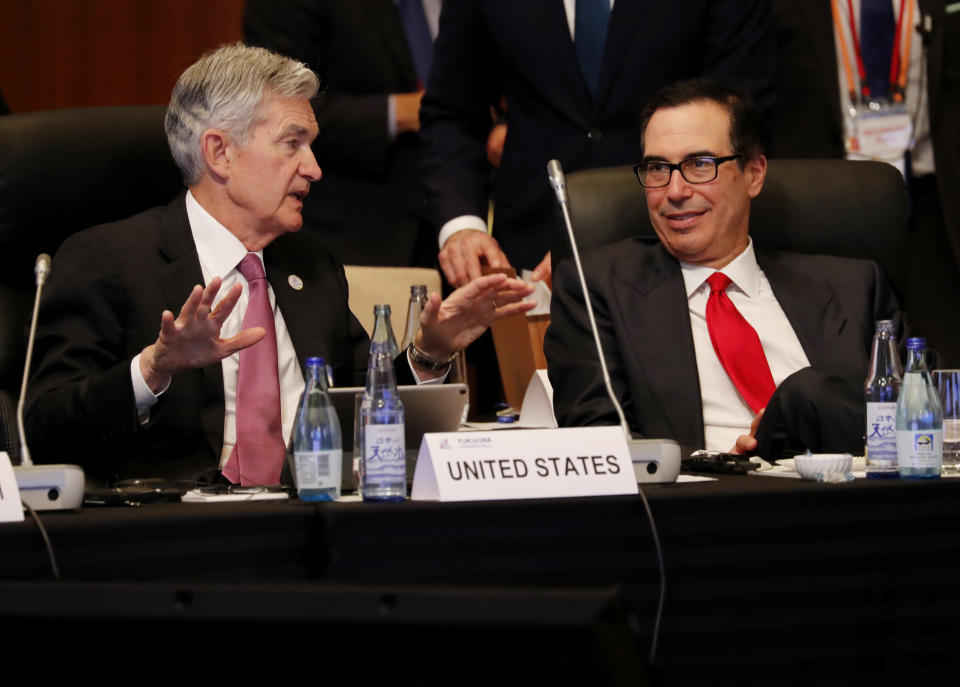Congress tells Fed to hurry up on cheap loan program for Main Street
The Federal Reserve says it will have its Main Street Lending Program live in the next two weeks, as Congress pressures the central bank and the U.S. Treasury to move faster on providing emergency loans to American businesses.
In testimony to the Senate Banking Committee on Tuesday, Fed Chairman Jerome Powell and Treasury Secretary Steven Mnuchin said it will launch its program for cheap loans by the end of the month or in the first few days of June.
“Funds should be flowing after that,” Powell said.
The program will offer four-year loans to companies with up to 15,000 employees or up to $5 billion in annual revenue. But the Fed has been slow to set the facility up; the central bank first announced the Main Street Lending Program on March 23 and has been working on the details of the program since.
Republicans and Democrats both expressed concern over the delay. Senate Banking Committee Chairman Mike Crapo, a Republican from Idaho, said the Fed’s facilities need to be “quickly operational, broadly available and as flexible as possible.” Sen. Mark Warner, a Democrat from Virginia, was an early advocate of the Main Street Lending Program and has criticized the Fed’s speed in setting it up.
“We need to get that out and we need to be very aggressive with it,” Warner told Powell.
Powell said that the Fed has been soliciting feedback from the public in designing the program. The Fed has never established such a facility, setting up a logistical challenge for a central bank that has more experience with bond markets than direct loan underwriting.
“It’s a really complex undertaking and people are working literally around the clock and have been for weeks to get it ready by the end of this month,” Powell said.

The Main Street Lending Program will allow lenders to underwrite three types of loans with different maximum loan sizes, all of which will allow for deferred principal and interest payments for the first year. They will also be priced at an interest rate of LIBOR plus 3%.
Through the program, banks would do the underwriting but would be able to sell 85% to 95% of the loan to the Fed’s facility, dumping the credit risk off of their own balance sheets.
Responding to concerns that the Fed and the Treasury were dragging their feet because of concerns over credit loss, Mnuchin said they were “fully prepared to take losses in certain scenarios on that capital.”
Broadly, Powell said the Fed will continue to rely on its arsenal of liquidity facilities to support the U.S. economy. Much like the Main Street Lending Program, Powell said the terms of its programs are flexible. On a forthcoming program designed to take on municipal debt, Powell said the facility could be expanded to cover borrowers in states with relatively small populations.
“We’re continuing to look at ways to accommodate further borrowers,” Powell said of the Municipal Liquidity Facility.
Powell said he is closely watching the economy for any “longer-run damage,” adding that “unnecessary insolvencies” could require more action from Congress and the Fed.
Brian Cheung is a reporter covering the Fed, economics, and banking for Yahoo Finance. You can follow him on Twitter @bcheungz.
Powell: Federal Reserve not out of ammunition 'by a long shot'
Fed flags corporate leverage as financial system weathers COVID-19
Job losses hit low-income households particularly hard, Fed finds
A glossary of the Federal Reserve's full arsenal of 'bazookas'
Read the latest financial and business news from Yahoo Finance
Follow Yahoo Finance on Twitter, Facebook, Instagram, Flipboard, SmartNews, LinkedIn, YouTube, and reddit.
